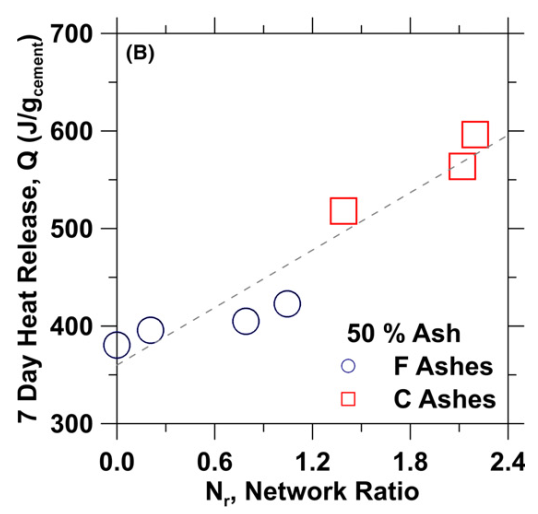An improved basis for characterizing the suitability of fly ash as a cement replacement agent
Abstract
Fly ash is a critical material for partial replacement of ordinary portland cement (OPC) in the binder fraction of a concrete mixture. However, significant compositional variability currently limits fly ash use. For example, the performance of OPC‐fly ash blends cannot be estimated a priori using current characterization standards (eg, ASTM C618). In this study, fly ashes spanning a wide compositional range are characterized in terms of glassy and crystalline phases using a combination of X‐ray fluorescence (XRF), X‐ray diffraction (XRD), and scanning electron microscopy with X‐ray energy‐dispersive spectroscopy (SEM‐EDS) techniques. The compositional data are distilled to a unitless parameter, the network ratio (Nr), which represents the network behavior of atoms that form alkali/alkaline earth‐aluminosilicate glasses that make up fly ashes. Nr is correlated with known composition‐dependent features, including the glass transition temperature and amorphous XRD peak (“hump”) position. Analysis of heat release data and compressive strengths are used to evaluate the impact of fly ash compositions on reaction kinetics and on the engineering properties of cement‐fly ash blends. It is shown that fly ashes hosting glasses with a high network ratio (ie, having a less stable glass structure) are more reactive than others.
